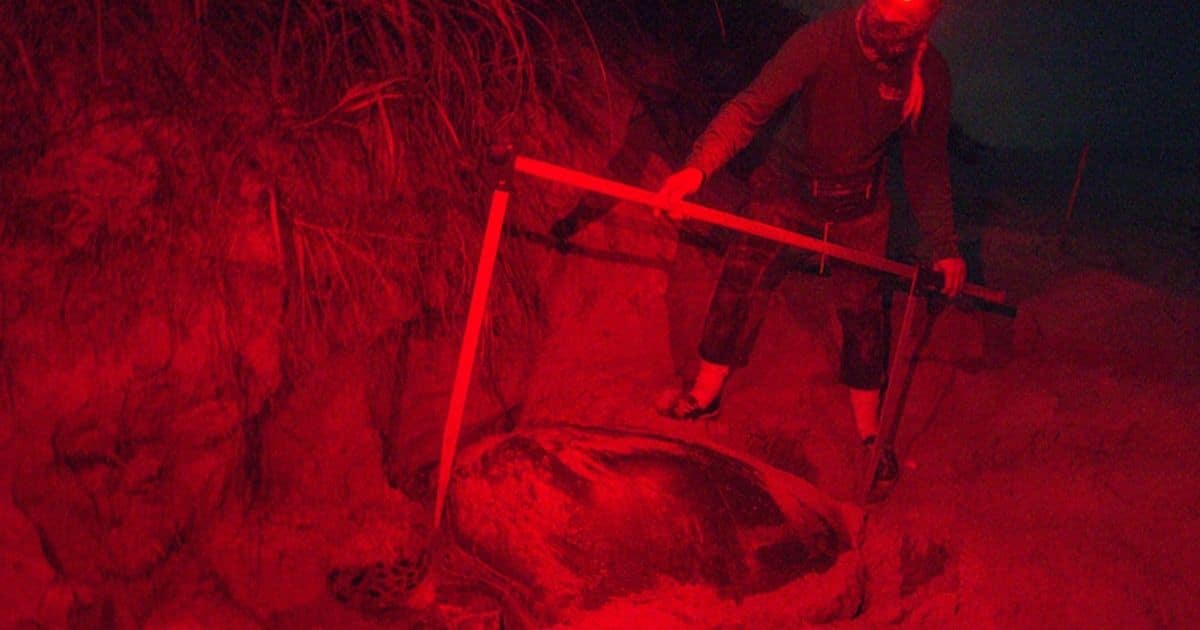A new University of Central Florida study indicates that smaller loggerhead and green sea turtles are nesting on Florida beaches than in the past; however, researchers aren’t sure why.
The findings, published this month in the journal Ecosphere, give clues to the status of the turtles, which is important to researchers who are monitoring the population health of the threatened species.
Central Florida’s Atlantic coastline hosts about one-third of all green turtle nests in the state and is one of the most important nesting areas in the world for loggerheads.
Sea turtles are important as iconic symbols of conservation in Florida and for the role they play in maintaining a healthy ocean ecosystem.
The reason for the appearance of smaller nesting turtles is still a mystery though, says Katrina Phillips, the study’s lead author and a doctoral candidate in UCF’s Department of Biology.
“It might be that juvenile turtles are growing more slowly because they are having a harder time finding food as a result of habitat degradation or competition from other turtles,” Phillips says. “Or smaller turtles may also be new recruits to the population as a result of successful sea turtle conservation efforts. We don’t know why we’re seeing more small turtles nesting.”
The researchers made the discovery by comparing shell length of nearly 10,000 nesting female loggerheads and more than 3,000 nesting female green turtles. The measurements were collected by UCF’s Marine Turtle Research Group over the course of a 37-year period, from 1982 to 2019.
The nesting turtles were observed in the Brevard County portion of the Archie Carr National Wildlife Refuge. Age is not recorded or known because it requires examining a cross-section of the turtle’s leg bone, which would require invasively sampling the turtle, and even then, at best, age would be estimated.
The researchers found that the average size of nesting loggerheads decreased by nearly 1 inch and the average size of nesting green sea turtles decreased by more than 1.5 inches since 1982.
In addition to raising questions about why the turtles are smaller, the findings also mean that when estimating female sea turtle maturity based on size, researchers and management agencies will need to consider smaller turtles in their estimates.
“The numbers we provide for the minimum size range of mature females will help other groups who study turtles in the water, where it’s not clear if they are mature or not, better estimate which of theirs are juveniles,” she says.
The extensive study was made possible by the long-time work of UCF’s Marine Sea Turtle Research Group, the researcher says.
“Many nesting beach projects take these measurements, but the UCF project is unique because of how long it’s been going on and how many turtles come ashore to nest here,” Phillips says. “Florida gets more loggerhead nests than anywhere else in the world, and the green turtle nest numbers are rising.”
The monitoring project was started in 1982 by UCF Professor Emeritus and Pegasus Professor of Biology Llewellyn “Doc” Ehrhart.
Phillips says the UCF Marine Turtle Research Group will continue monitoring the nesting sites, which will allow researchers to assess if the trends continue or change.
By Robert Wells, University of Central Florida
Journal Reference:
Katrina F. Phillips, Gustavo D. Stahelin, Ryan M. Chabot, Katherine L. Mansfield. Long‐term trends in marine turtle size at maturity at an important Atlantic rookery. Ecosphere, 2021; 12 (7) DOI: 10.1002/ecs2.3631

